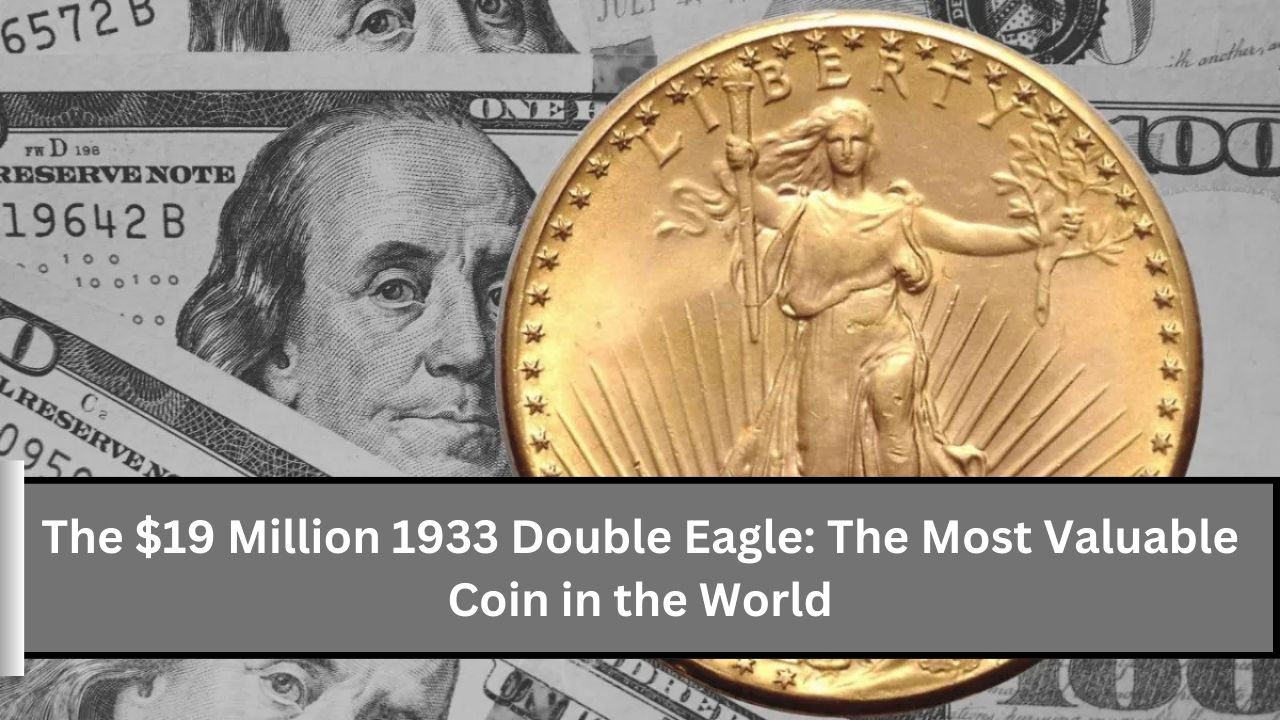Coins are exchanged daily for their face value, but some are worth far more than their printed amount due to their rarity and historical significance. The 1933 $20 Double Eagle is one such example, with a staggering auction price of $18.9 million in 2021. In this article, we explore why this coin is so valuable and its fascinating history.
What is the 1933 Double Eagle?
The 1933 Double Eagle is a $20 gold coin that stands out as one of the few remaining from that era. It features an image of Liberty holding a torch in one hand and an olive branch in the other, with 46 stars surrounding her. The Capitol building appears in the background, along with the word “LIBERTY” and the year “1933.”
On the reverse side, the coin shows an eagle soaring above the rays of the sun, with the inscriptions “UNITED STATES OF AMERICA” and “TWENTY DOLLARS” at the top, and “IN GOD WE TRUST” at the bottom.
Why Is the 1933 Double Eagle Worth So Much?
The incredible value of the 1933 Double Eagle comes from its historical background. In 1933, President Franklin D. Roosevelt issued an order banning the private ownership of gold in the United States. This led to the collection and melting of nearly all gold coins, including the Double Eagles. However, a few coins survived, and they became highly prized by collectors.
Most of these coins were melted down by the government, but a small number managed to escape destruction, making them rare and incredibly valuable. The coin’s rarity, combined with its historical significance as one of the last U.S. gold coins, makes it one of the most sought-after pieces in the world of numismatics.
The Auction of the $19 Million Coin
In 2021, a 1933 Double Eagle was sold at an auction for an incredible $18.9 million, making it the most expensive coin ever sold. Its journey from a coin meant to be melted down to a record-breaking auction item is a testament to its rarity and appeal.
Collectors and historians alike value this coin not just for its gold content, but for the story it tells about a turbulent time in U.S. financial history. Its survival through the executive order banning gold ownership gives it immense historical significance, further adding to its worth.
Summary of Key Features
| Feature | Details |
|---|---|
| Year | 1933 |
| Value | $20 (face value) |
| Auction Price | $18.9 million (2021) |
| Front (Obverse) | Liberty holding a torch and olive branch |
| Back (Reverse) | Eagle flying above rays of the sun |
| Historical Significance | Survived gold ban during Roosevelt’s presidency |
Conclusion
The 1933 Double Eagle stands as a symbol of a significant moment in U.S. history when private ownership of gold was banned. Despite the order to melt down these coins, a few survived and have since become some of the most valuable pieces in numismatic history. The $19 million price tag reflects not only the rarity of the coin but also its importance as a historical artifact.
This coin shows how a simple object can tell a story of the past while becoming a valuable treasure in the present. For collectors and historians alike, the 1933 Double Eagle is a true gem that highlights the intersection of history, rarity, and value.
FAQ’s
Why is the 1933 Double Eagle so rare?
The rarity of the 1933 Double Eagle comes from the executive order by President Roosevelt, which banned private gold ownership and led to the melting of most of these coins.
How much did the 1933 Double Eagle sell for?
In 2021, the 1933 Double Eagle was sold at an auction for $18.9 million, making it the most expensive coin ever sold.
What is depicted on the 1933 Double Eagle coin?
The coin features Liberty holding a torch and an olive branch on one side, and an eagle flying above the rays of the sun on the reverse side.
What was the original value of the 1933 Double Eagle?
The original face value of the 1933 Double Eagle was $20, which was its standard currency value before it became a rare collector’s item.
Why did President Roosevelt ban private gold ownership?
President Roosevelt banned private gold ownership in 1933 to stabilize the U.S. economy during the Great Depression and control the supply of gold.

